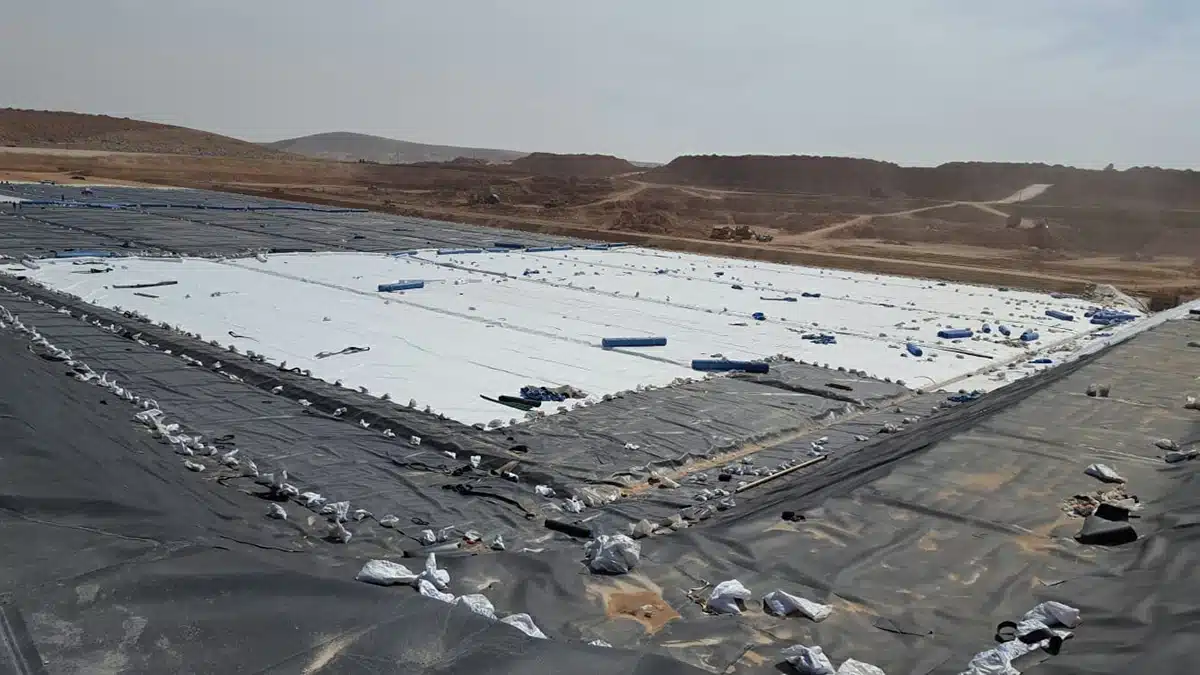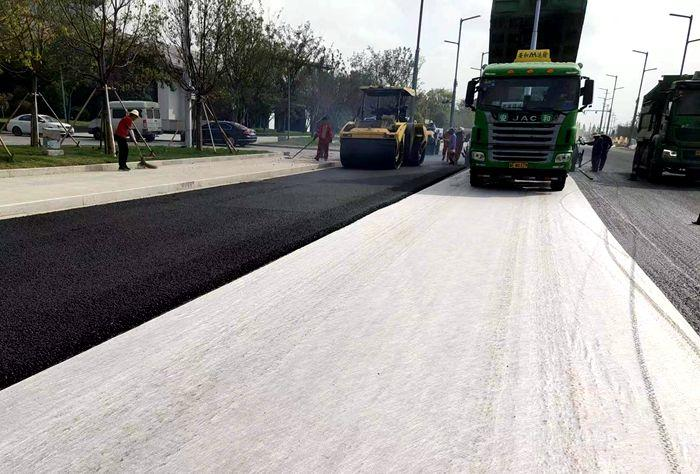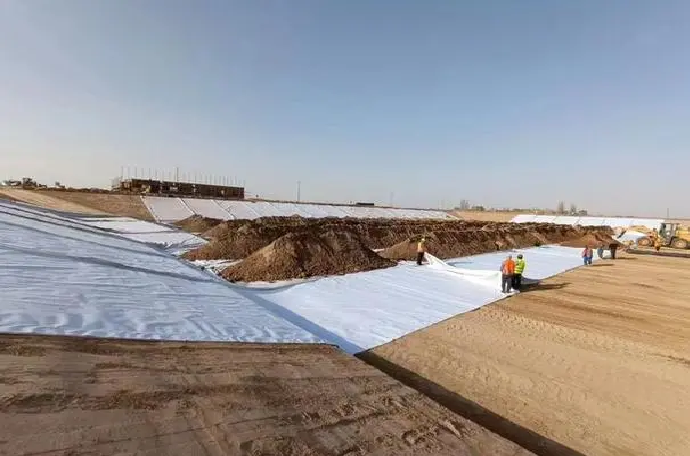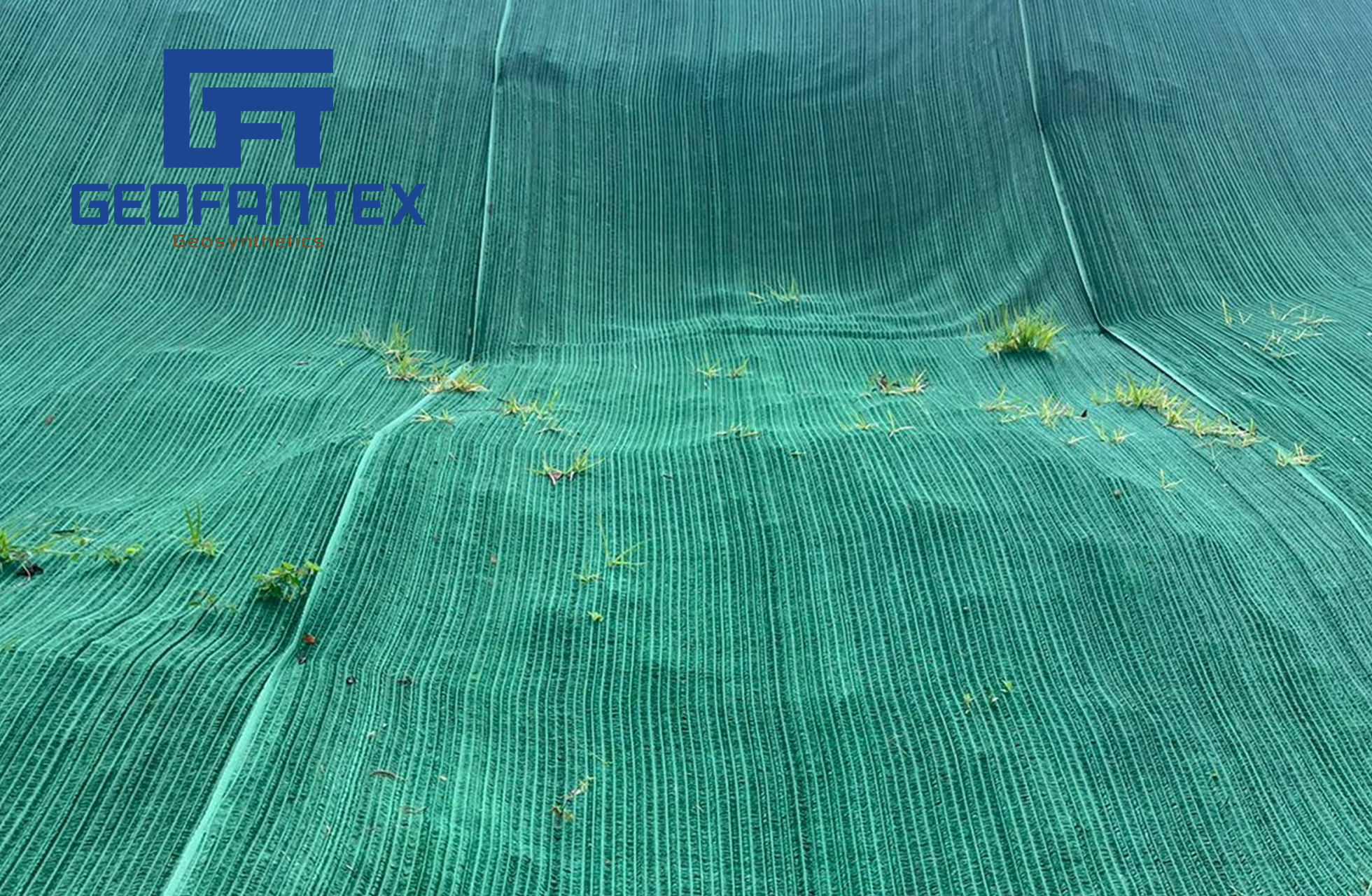+86-159 9860 6917
info@geofantex.com
geofantex@gmail.com
+86-400-8266163-44899
Soil erosion control blankets are essential for managing and preventing soil erosion in construction, landscaping, and environmental projects. Made from materials like geotextiles, these blankets provide a protective layer that helps stabilize the soil, supports plant growth, and stops soil from being washed or blown away by water and wind.
What is an Erosion Control Blanket?
An erosion control blanket is a protective material designed to reduce soil erosion caused by wind and water. Typically biodegradable, open-weave blankets that provide temporary cover and support for establishing vegetation on bare soil areas, they are made from materials like straw, coconut fiber, or synthetic fibers such as geotextiles. These blankets are laid over the soil surface to protect it while promoting vegetation growth. They work by acting as a barrier that shields the soil from rainfall and wind, stabilizing the surface and helping to retain moisture, which fosters root growth. Over time, these blankets decompose naturally or may be replaced with a more permanent solution, depending on the application.

What Are 4 Methods of Controlling Soil Erosion?
- Vegetative Cover: Planting grass, shrubs, or trees helps bind the soil particles together, reducing the effect of rainfall and wind.
- Terracing: Building terraces on slopes reduces the velocity of water flow, which decreases erosion.
- Silt Fences: Installed along the perimeter of construction sites, these fences capture sediment and prevent it from spreading.
- Erosion Control Blankets: Soil erosion control blankets, like geotextiles, provide an immediate and effective means of reducing soil erosion by covering bare soil and promoting plant growth.
What is the Difference Between Erosion Control Blanket and Matting?
The primary difference between an erosion control blanket and matting lies in their material composition and application. Erosion Control Blankets are specified for temporary applications and are typically made from biodegradable materials such as coconut coir, jute, or geotextile fabrics. They are designed to degrade over time as the vegetation becomes established. Turf Reinforcement Mats, on the other hand, provide a permanent erosion control solution, often made from coarser, synthetic materials that remain in place longer to offer more durable soil stabilization. While both serve to protect the soil, erosion control blankets are better suited for temporary erosion control during the establishment of vegetation, while Turf Reinforcement Mats are ideal for long-term stabilization, especially where vegetation may take longer to establish or in areas with harsh environmental conditions.
Do Erosion Control Blankets Need to Be Removed?
In most cases, soil erosion control blankets do not need to be removed. As they are typically made from biodegradable materials, they decompose naturally over time. Once the vegetation has been fully established, the blanket will break down and cease to provide significant structural support. No need to worry about removing or maintaining them after they are installed, as the blankets naturally degrade and leave no lasting impact. However, in cases where synthetic materials are used, removal may be necessary to prevent them from interfering with the growth of plants or becoming a source of pollution. It’s essential to evaluate the material of the blanket and the specific conditions of the site to determine if removal is required.
Soil erosion control blankets are a highly effective and sustainable solution for preventing soil erosion in construction, landscaping, and environmental restoration projects. By incorporating materials such as geotextiles, these blankets provide essential protection against wind and water erosion while fostering the growth of vegetation. Their ease of installation, cost-effectiveness, and environmental benefits make them an ideal choice for erosion control in various applications.



Get Free Sample
We’ll respond as soon as possible(within 12 hours)






















